Does your nutrition change based on your activity levels or based on your training days? I love teaching athlete’s about “The Athlete’s Plates”, created by the dietitians at The U.S. Olympic Committee. The plates are meant as guidelines and can be modified for athlete’s nutrition choices. As an athlete, I like that the plates encourage different nutrition depending on activity levels.
Everyday Athletes
You might be thinking, “I’m not an athlete.” If you exercise consistently, participate in sport, train consistently, are working towards physical goals, you should call yourself an athlete. Sports psychologist and associate professor of athletic coaching at West Virginia University, Kristen Dieffenbach, suggests everyone should consider themselves as athletes. I agree that this status isn’t just reserved for those that get paid. The way you think about yourself impacts how you perform, how you train, and how you fuel your body.
What is the Athlete’s Plate?
Physical demands of your practices, exercise sessions, races, etc. differ day to day. And your diet should reflect these differences. One way to modify your plate and to maintain performance levels is to listen to your body. This takes practice and can be tricky, especially if exercise decreases hunger cues and appetite levels. Another reason I like these plates.
The plates consist of an easy training plate, moderate training plate, and hard training/game day plate. With the moderate training plate designed to be your baseline plate you can add more or less food to your plate depending on your training levels.
Easy Training Plate – Athlete’s Nutrition for an Easy Day
An easy day is a short workout or low-intensity workout. Since this plate focuses on fruits and vegetables, it packs in a lot of nutrition. Easy day plates are also good for sports that don’t require high levels of energy.
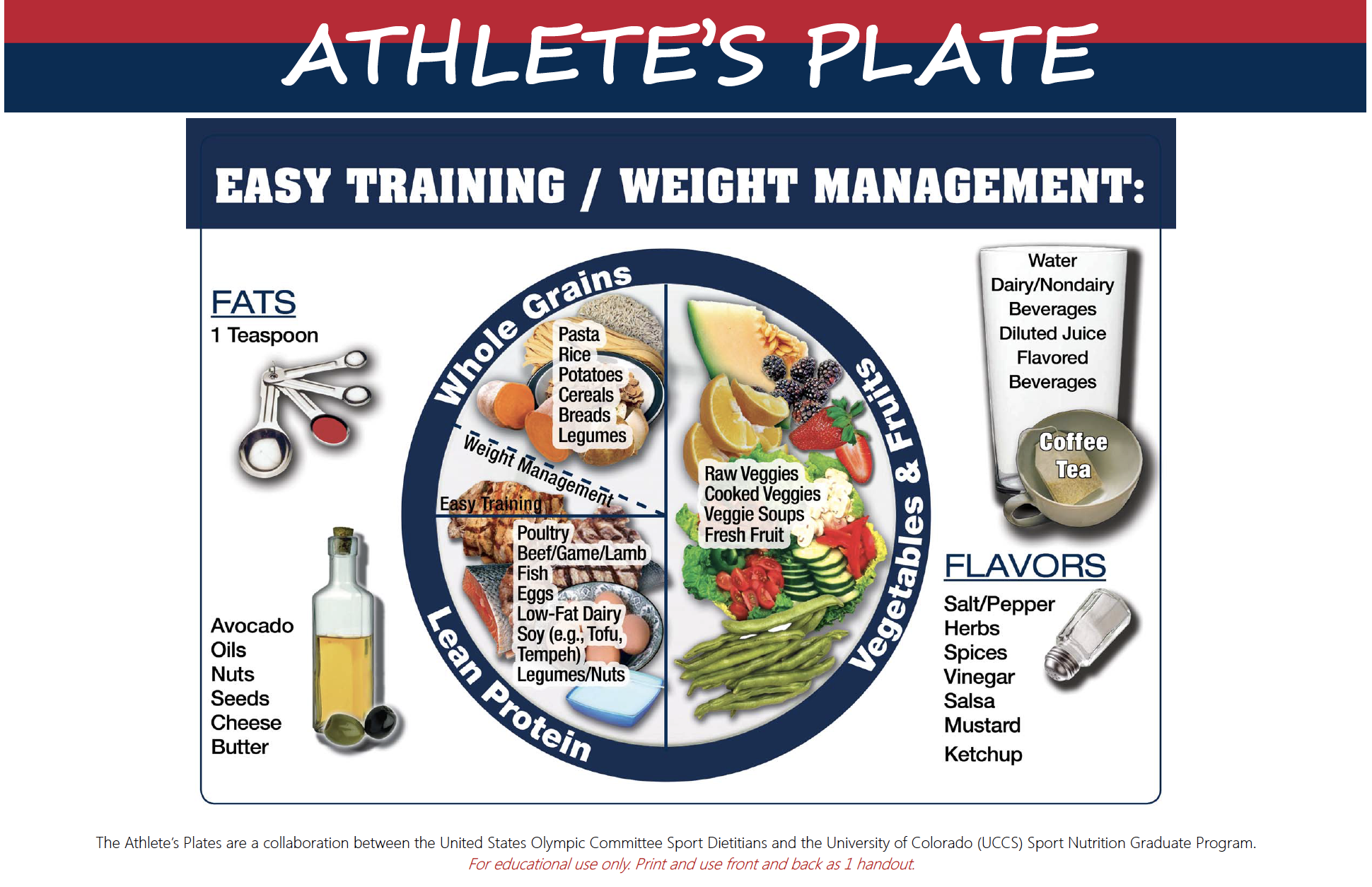
Moderate Training Plate – Athlete’s Nutrition Baseline
The moderate plate is good to use for days that have higher intensity workouts or double training sessions. The moderate plate is designed to be your baseline. Take notice of the amount of food on the moderate plate and you can use this to adjust up or down, depending on how much energy (calories) you need for the day.
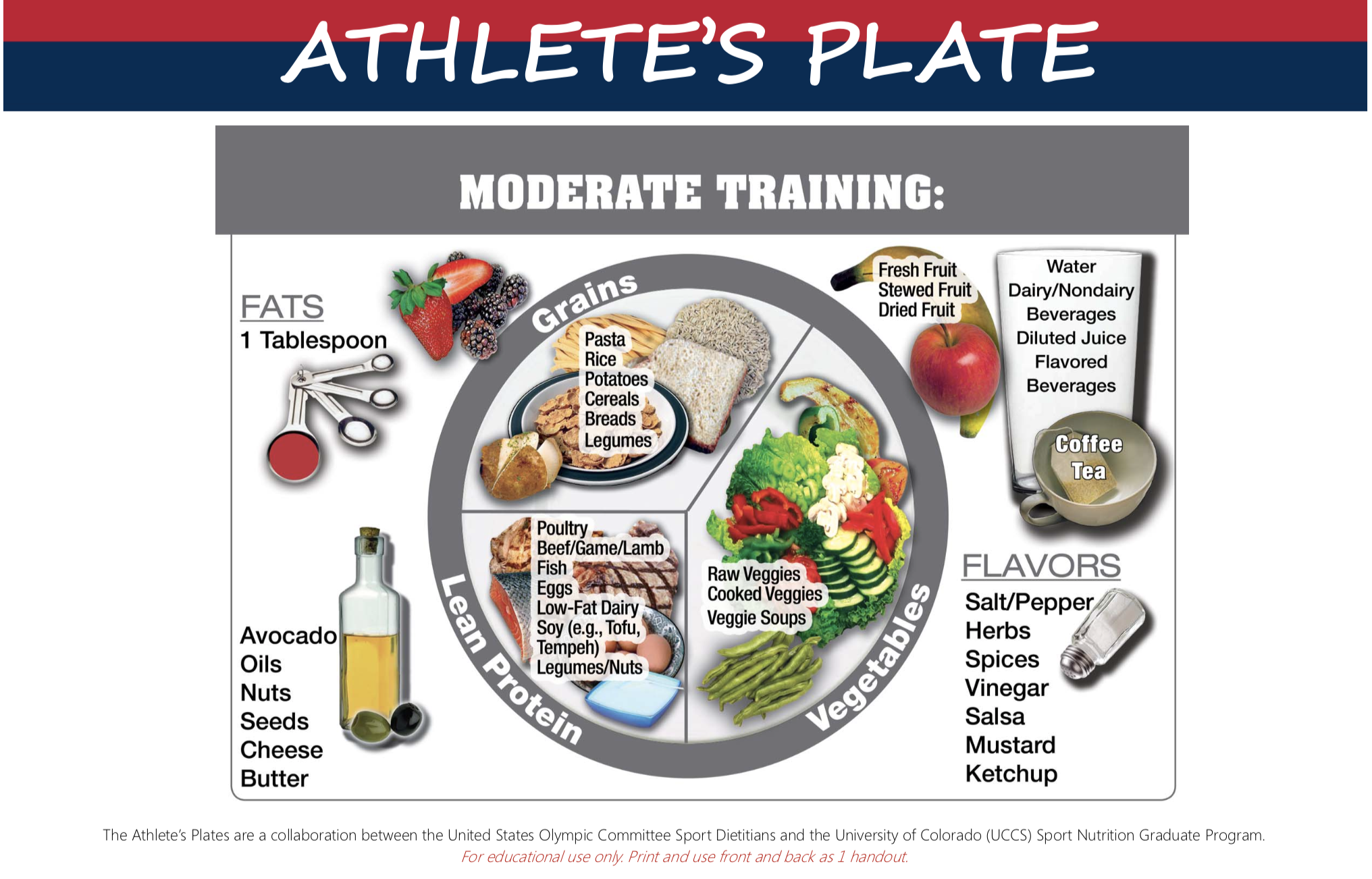

Hard Training Plate – Athlete’s Nutrition for Game Day
A hard day contains an endurance workout, dual practices, or a competition. If your competition requires extra fuel from carbohydrates, the hard training plate is a good one to use. This plate dedicates half of it to grains. This plate supplies you with the energy you need to get through a hard training day and perform at the your best level.
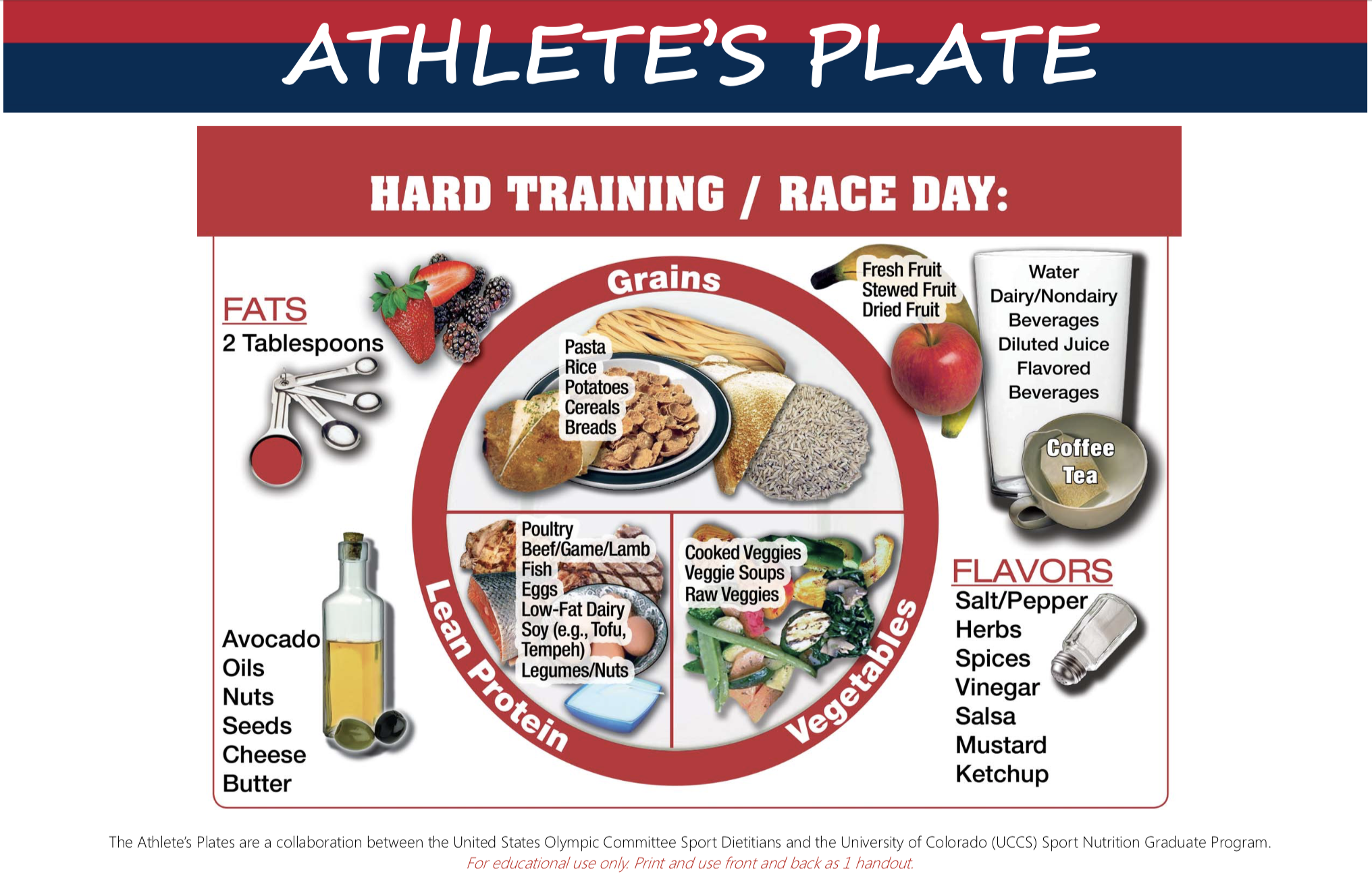
Athlete’s Plate + Intuitive Eating
My nutrition philosophy is: if we tune into our hunger and fullness signals, our bodies are good guides and will help us make healthy food decisions.
These plates give you flexibility and guidance, just like the principles of intuitive eating. So combining intuitive eating principles with the Athlete’s Plates can really help athlete’s understand what to put on their plate.
Have you found The Athlete’s Plates helpful to you? Do you adjust your food intake based on your training days and rest days?
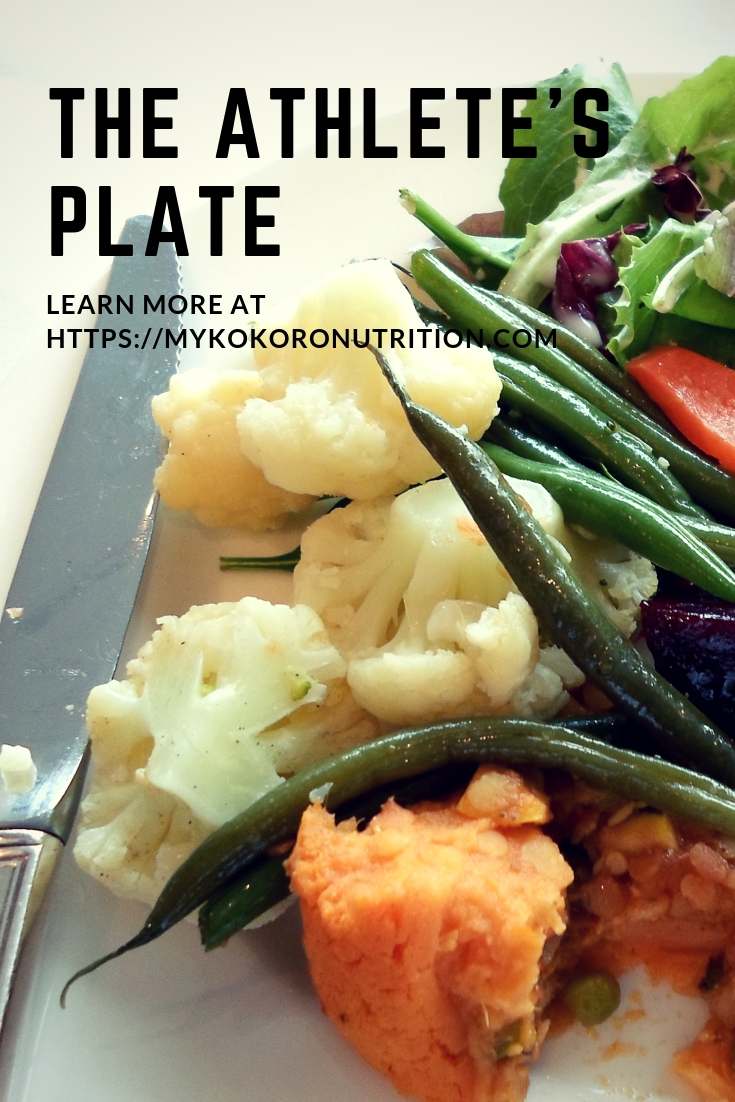
For more information from the The U.S. Olympic Committee on the Athlete’s Plate, click here.





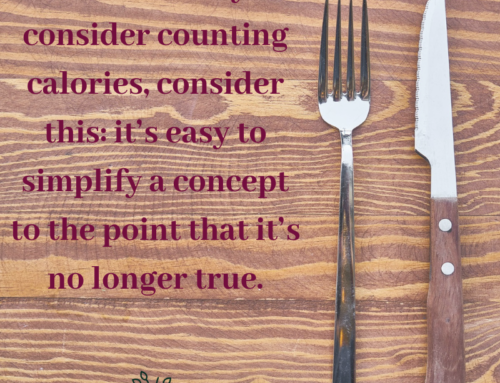
[…] goes on your plate after you workout will slightly depend on the type of workout you’re doing. Yet, smartly […]